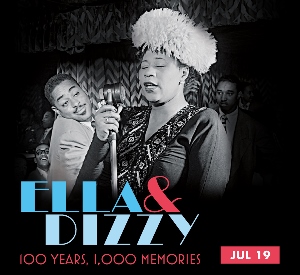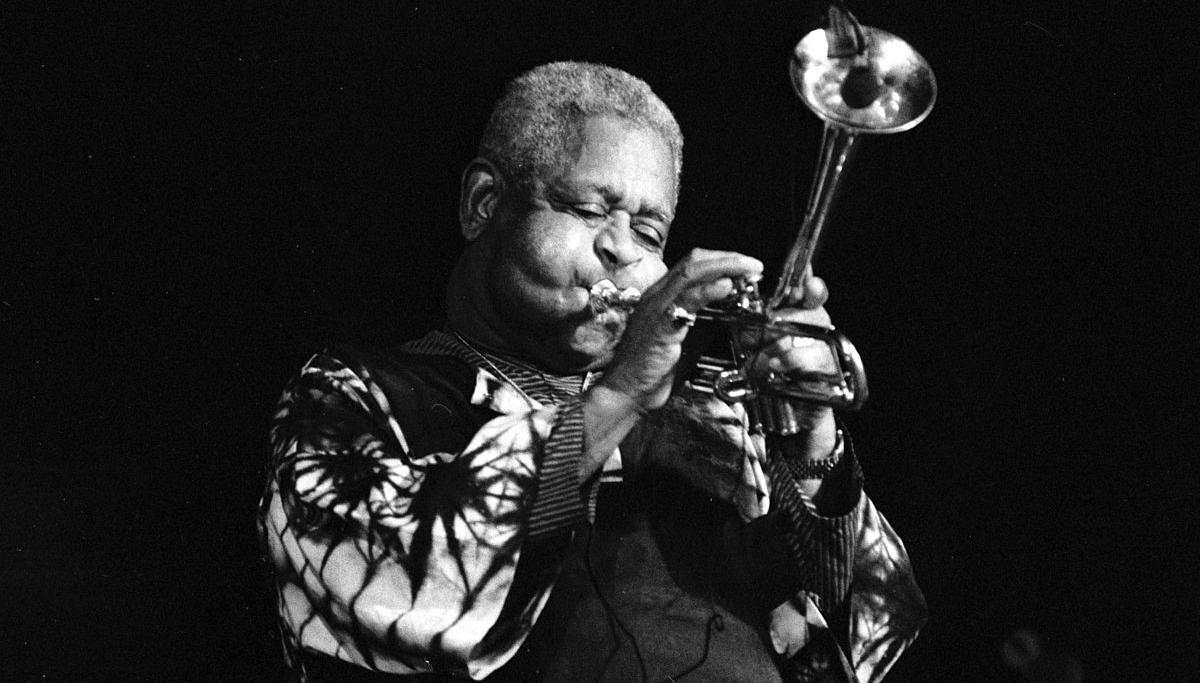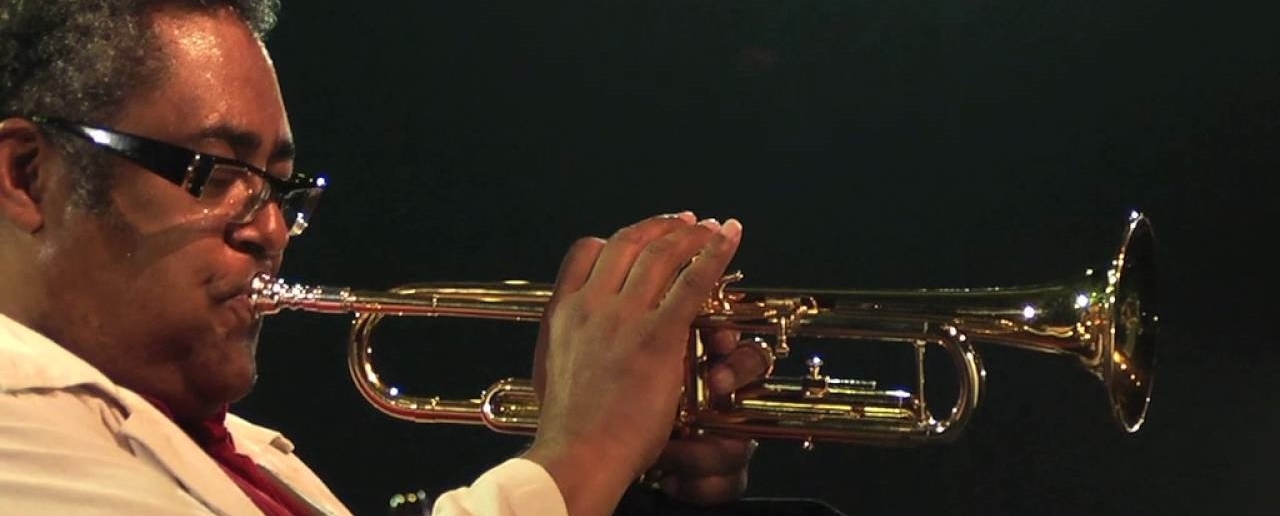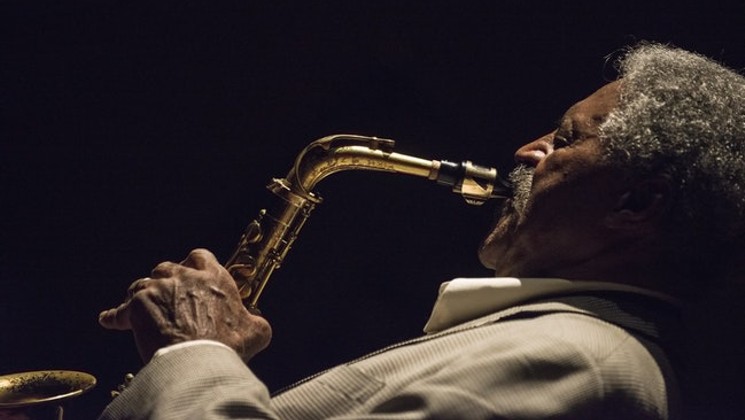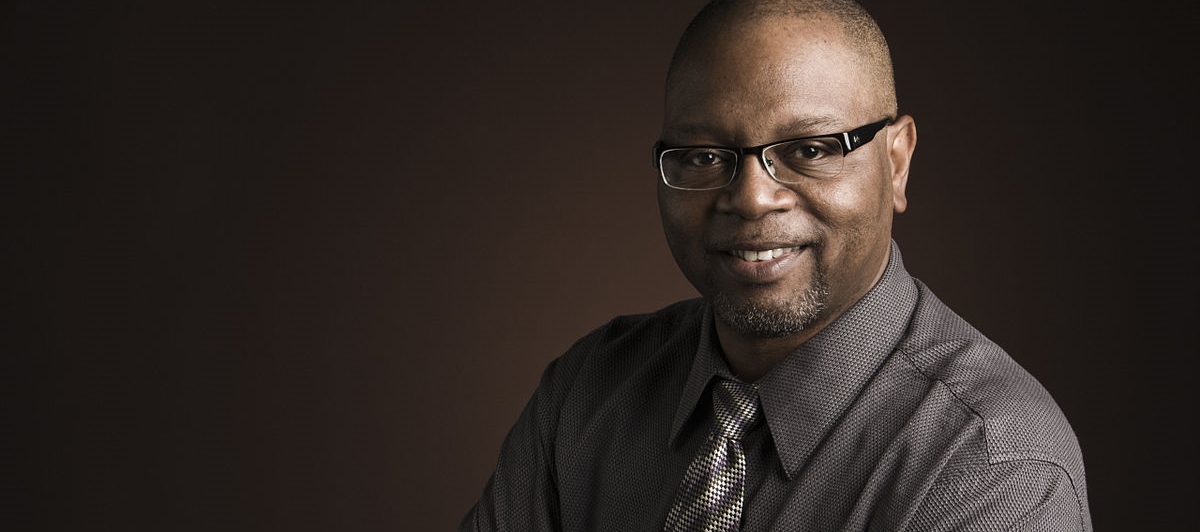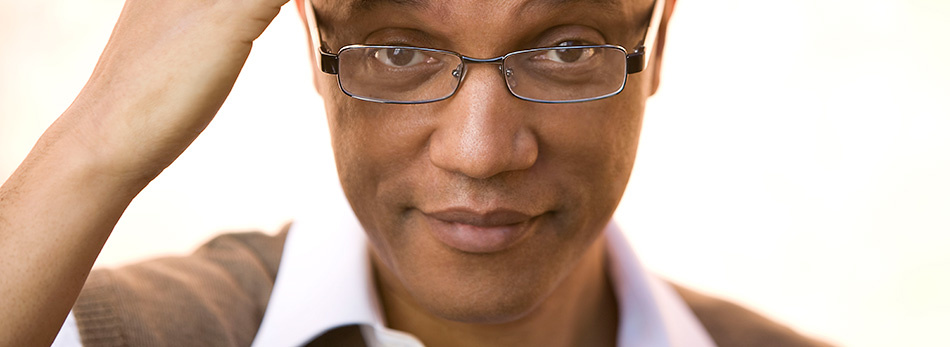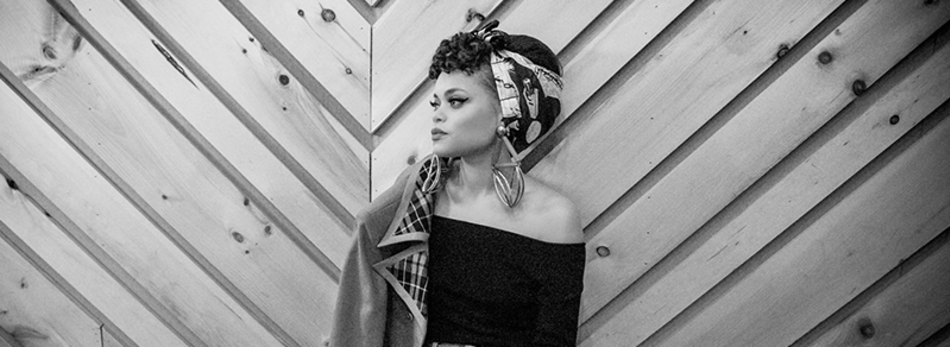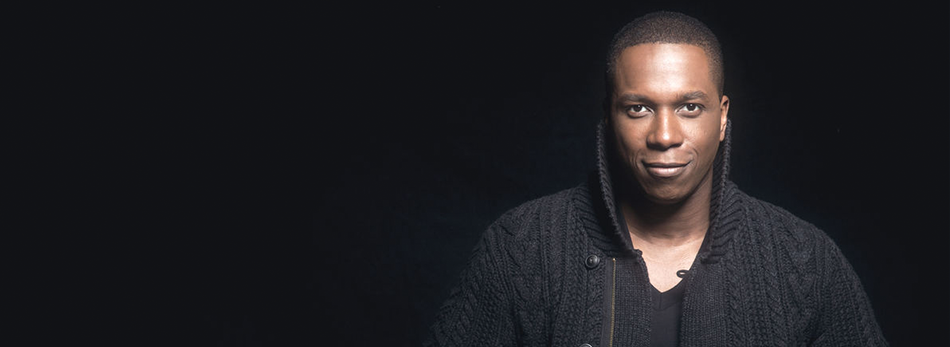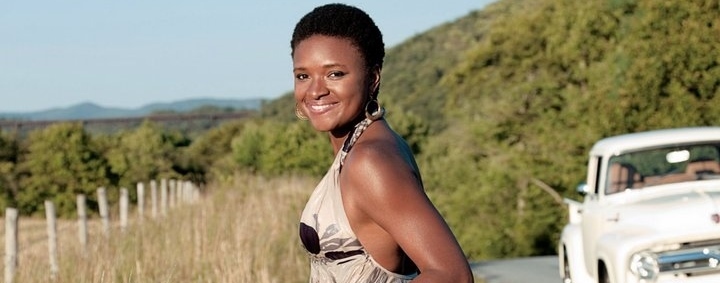JAZZ SO HOT, IT MADE ME DIZZY
The air was pure celebration at a crowded Hollywood Bowl Wednesday night as folks came from near and far to celebrate two of jazz’s greatest talents: Vocalist Ella Fitzgerald and trumpeter John Birks “Dizzy” Gillespie, both of whom would be celebrating their 100th birthday this year. For the first act, some of our greatest jazz musicians were collected to form “A Dizzy Celebration All-Star Big Band,” and it was one of the tightest, most thrilling sets I’ve heard in years. The second act had modern artists’”backed by the Hollywood Bowl Orchestra and conductor Vince Mendoza’”reinterpreting the songs that become iconic for Ella. The latter half turned out to be a mixed bag for several reasons, but an evening under the stars hearing great standards and a smokin’ hot Dizzy band sure was a cure for the blues.
Dizzy Gillespie’”trumpet player, bandleader, composer, and singer’”wasn’t just a major figure in 20th-century American music, he was a founding father of modern jazz. His signature ballooning cheeks and bent trumpet made him one of the world’s most instantly recognizable figures, and conductor Jon Faddis (photo below)’”who is widely regarded as that rare trumpeter who can triumphantly re-create Dizzy’s style’”led his jazz all-stars through a set of original charts that’”I ain’t kiddin’’”gave some of Dizzy’s original recordings a run for their money.
But these cats weren’t copying Dizzy’s recordings, they were blasting a tribute to the heavens, frequently riffing in their own jaw-dropping style. Many of the players have been around for decades; some on the Tonight Show, some as studio players, but all masters at their craft. The special guest among these greats was Charles McPherson, one of the most artistically accomplished and highly regarded saxophonists to emerge from the post-bebop era, who brought his own inimitable style to the proceedings. While his alto playing is based on the Charlie Parker style, McPherson still looks ahead at 77 years of age (photo below), and he had us ridin’ high on Dizzy’s “Groovin’ High” from 1945. Later, I was bummed that his outrageous duets with Faddis and their lightning-speed riffs weren’t recorded for posterity, but they made it clear why “Things to Come” turned the jazz world upside-down in 1946: Dizzy took the popular big-band sound and mixed in the contorted rhythms and fiery phrasing of the newly formed bop jazz.
Meanwhile, the cool rhythms of “Algo Bueno,” a composition recorded in 1954, was indeed a good thing for Jeff Driskill, whose alto sax delivered a combination of prettiness and heft. (The other saxes: Bob Reynolds, Bob Sheppard and Adam Schroeder.)
It was also during “Things to Come” that Faddis proved prophetic at the start of the set when he said, “Lewis Nash is the world’s best drummer.” Faddis may have been leading the boys, but Nash (pictured below) was in the driver’s seat; he listened intently, had great volume control, and exuded character on his skins.
Dizzy’s love of Cuban and African music is a major element in “Manteca,” and this gave Nash a solo opening of mesmerizing tribal jazz. Co-written by Chano Pozo and Gil Fuller in 1947, “Manteca” gave all four trumpets the chance to solo, each out-squealing each other as they rose in a frenzied arc of joy. The trumpeters were Ray Monteiro, Rashawn Ross, Kevin Richardson, and Bijon Watson.
It was in the same number that the great Billy Childs (who I wouldn’t mind seeing in a solo show at the Bowl) lit the keyboards on fire and then stomped the flames out with his forearms (pictured above). Smokin’ and slammin’, he had the Bowl going wild. Along with bassist Peter Washington (whose late-night eating habits were divulged by Faddis), Childs was also featured in the bandleader’s best-known tune, “A Night in Tunisia,” which Gillespie said “has withstood the vicissitudes of the contingent world and moved in an odyssey into the realm of the metaphysical.” This tune also inspired a colossal trombone duet between Erik Hughes and Garrett Smith, and a mean Faddis finish. (Our two other trombones’”an instrument which gets as much ribbing as violas do in classical music, even here’”were Ido Meesulam and Craig Gosnell.)
What a shame there wasn’t more of this stuff at the Playboy Jazz Festival!
Of all the singers in the second half, only one captured the magic and distinction that has come to be expected from a jazz vocalist, at least for me anyway. The kind of voice that makes you immediately come to attention knowing you’re in the presence of true originality. And that was 32-year-old Andra Day (photo above). Her demeanor is imperturbable, her tone is both earthy and ethereal, and she clearly understands and incorporates classic jazz (I got a little Billie, a little Eartha, a little Sarah) within a pop sensibility. With flowers adorning her puffy hair, she had about 14,000 spectators in the palm of her hand. We got a smooth “But Not For Me,” some scat in “I’ve Got My Love to Keep Me Warm,” and major humor honoring “Mack the Knife” from Ella’s 1960 album recorded live (Fitzgerald improvised lyrics after forgetting the originals). Holy cow, I’m in love!
Hamilton star Leslie Odom Jr. (above) has been singing jazz around the country since he won a Tony for playing Aaron Burr. His style is relaxed (although he seemed a bit nervous) and sweet, and there’s a lovely, light vibrato, so he’s pleasant but he’s oomph-free and hardly adventurous vocally. He gave us “Someone to Watch Over Me,” “Night and Day” and “Nice Work If You Can Get It.”
Lizz Wright (above) had Ella’s low, smoky register in “Embraceable You,” a great range in “Caravan,” and a rich vibrato in “The Way You Look Tonight.” Jazz violinist Regina Carter brought a Stéphane Grappelli flair to “Lady Be Good” (aided by the lovely piano work of Patrice Rushen) and did an awesome, breezy duet with guitarist Paul Jackson, Jr. on Hoagy Carmichael’s “Judy” from her brand new CD Ella: Accentuate the Positive, a perfect tune for a warm summer night.
The strangest and certainly the most disappointing performer was Jane Monheit. This is one of America’s greatest jazz chanteuses with silky scatting, adroit phrasing, and soulful sizzle (not to mention she’s a terrific raconteur). But she was yowling strangely on “It’s Alright With Me,” enunciating strangely on “Love for Sale,” and breathing strangely on “Cheek to Cheek.” She’s a Bowl vet who knows the ropes here, so it wasn’t nerves. She did mention she won’t be around for a bow because she has to catch a red-eye.
Perhaps it was that the orchestra, perfectly guided by Mendoza, was given some rather syrupy arrangements, violin-heavy and almost bordering on Muzak (no one mentioned whose arrangements these were). So I took her latest CD, Songbook Sessions: Ella Fitzgerald, for a spin, and something ain’t right. Her phrasing is funky and she’s doing a growly thing that I don’t get. I guess it’s just one of those things.
Actress CCH Pounder was given the task of emceeing the event, self-admittedly because she stars on NCIS New Orleans. Reading rather unprepared from notes she clearly didn’t write, it was a lost opportunity to relate anecdotes and offer insights into Ella and Dizzy’s wizardry. Fortunately, the music spoke for itself.
photos courtesy LA Phil
Ella and Dizzy: 100 Years, 1,000 Memories
The Hollywood Bowl
played July 19, 2017
for more events, visit Hollywood Bowl
